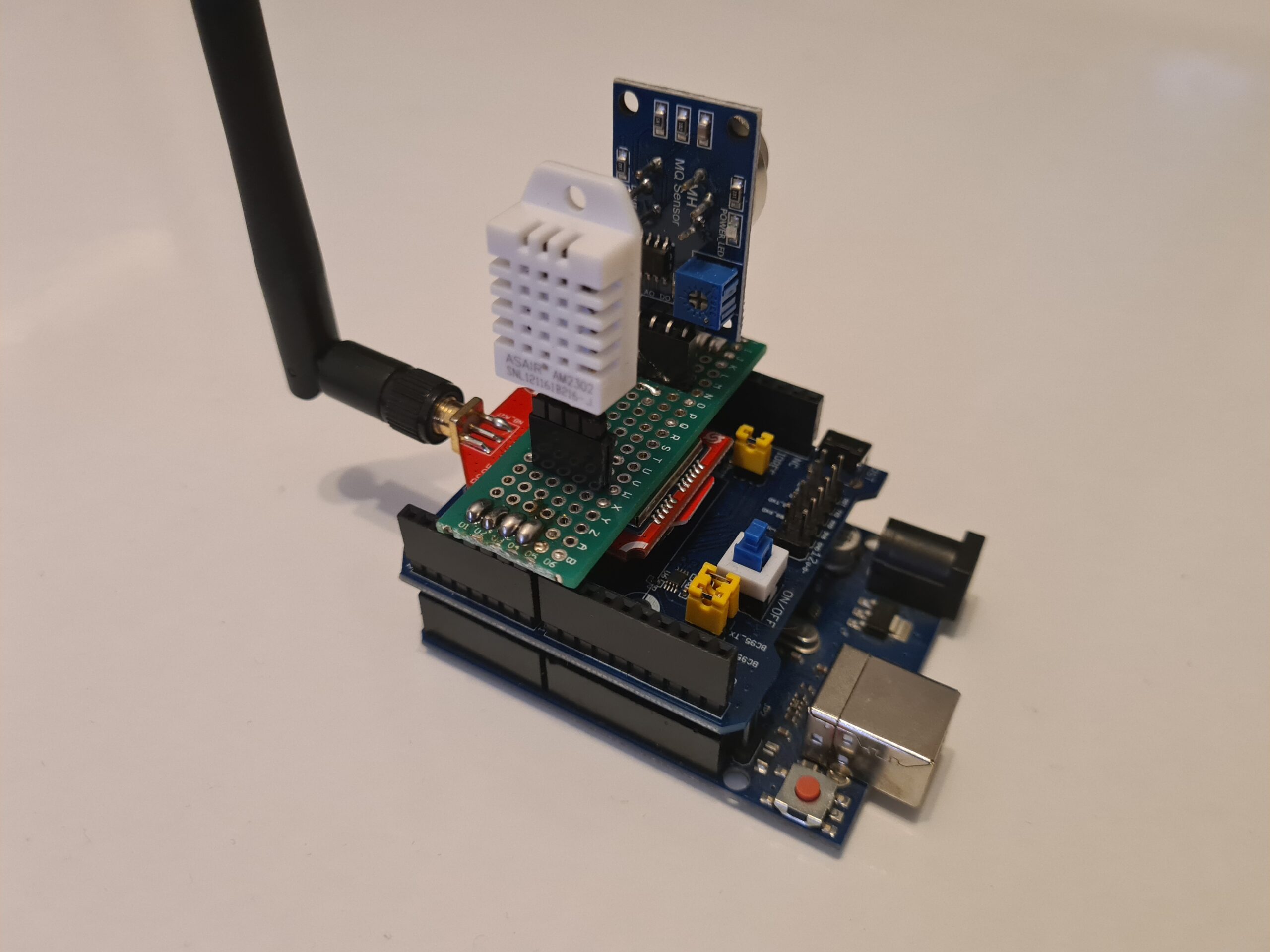This project aimed to develop a dynamic data measurement system which measures and transmits data over Narrowband IoT while incorporating various algorithms to reduce unnecessary power consumption and data transmission. The environment parameters that were monitored in this project include temperature, humidity and air quality (PM2.5). The setup included two sensors to measure the desired quantities, a Quectel NB-IoT modem to transmit data and an Atmel microcontroller to poll sensors, pass data to the modem and run the algorithms. The measured data is then transmitted and forwarded to an IoT cloud interface.
The implemented algorithms include utilising deep sleep mechanisms within the central microcontroller and transmitting modem, adjustable sample rate to reduce power consumption in periods with lower rate of change of data, and minimum variance transmission to ensure repeated values are not transmitted wasting power and avoiding unnecessary data transmission which could reduce costs as many providers charge on the amount of data used.
The measured quantities of temperature and humidity were also used to model the air quality sensor to a temperature and humidity dependence thus increasing testing accuracy. The temperature and humidity sensor was factory calibrated and thus did not need calibration.
The algorithms and hardware setup were evaluated by comparing the total power draw throughout a 24 hour cycle and compared to a system which was continuously measuring and transmitting data. While a substantial reduction in power usage was noted, downfalls in this specific hardware setup were visible as such development boards are not optimised for ultra-low power draw. In order to avoid this in the future, custom printed circuit boards and the ability to cut power to the modem and sensors would enable even further reductions in power draw.
This project was conducted in collaboration with Epic who provided the SIM card, narrowband IoT base station and backend connection information.

Student: Luca Ruggier
Course: B.Sc. (Hons.) Computer Engineering
Supervisor: Prof. Carl Debono
Co-supervisor: Dr Mario Cordina
